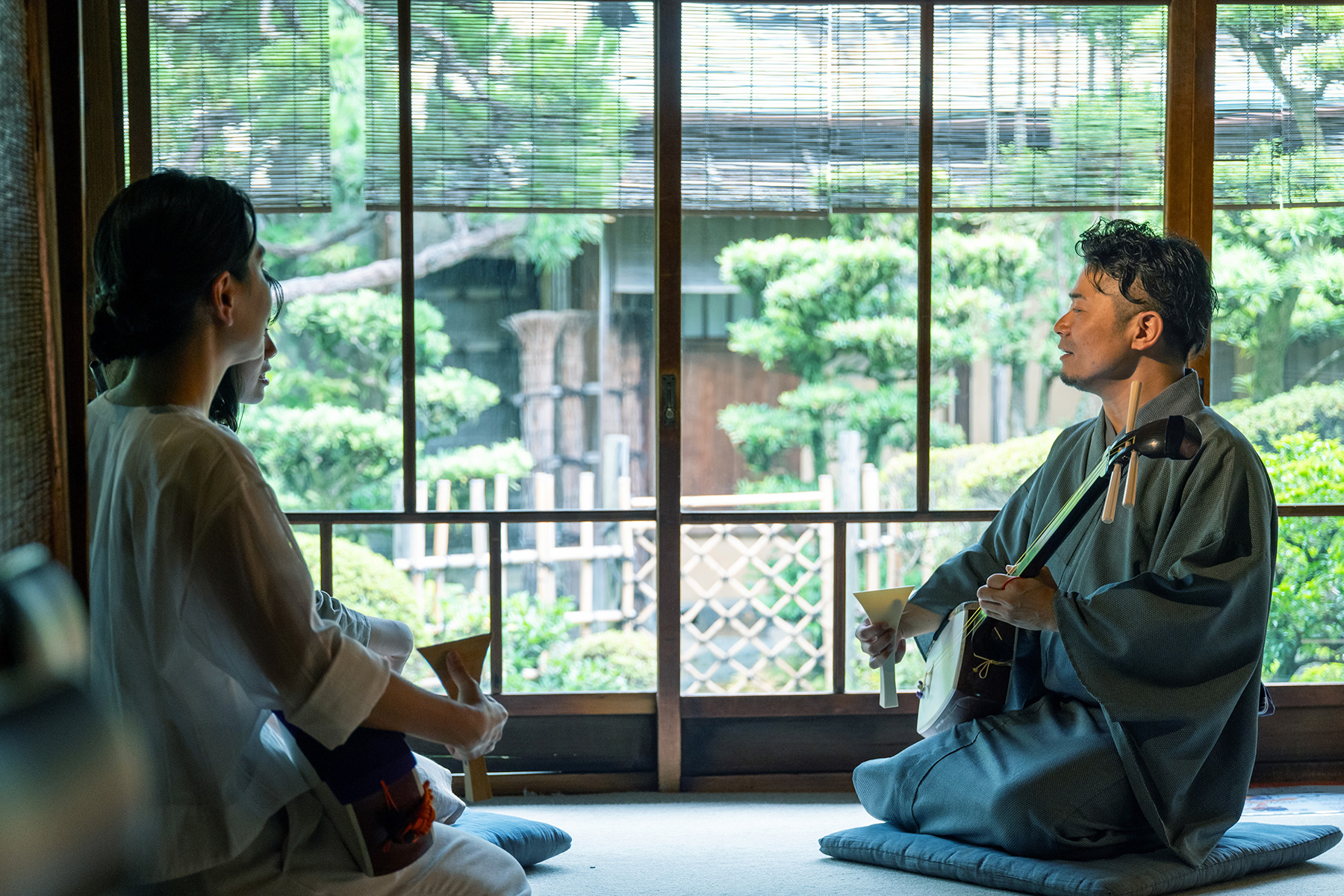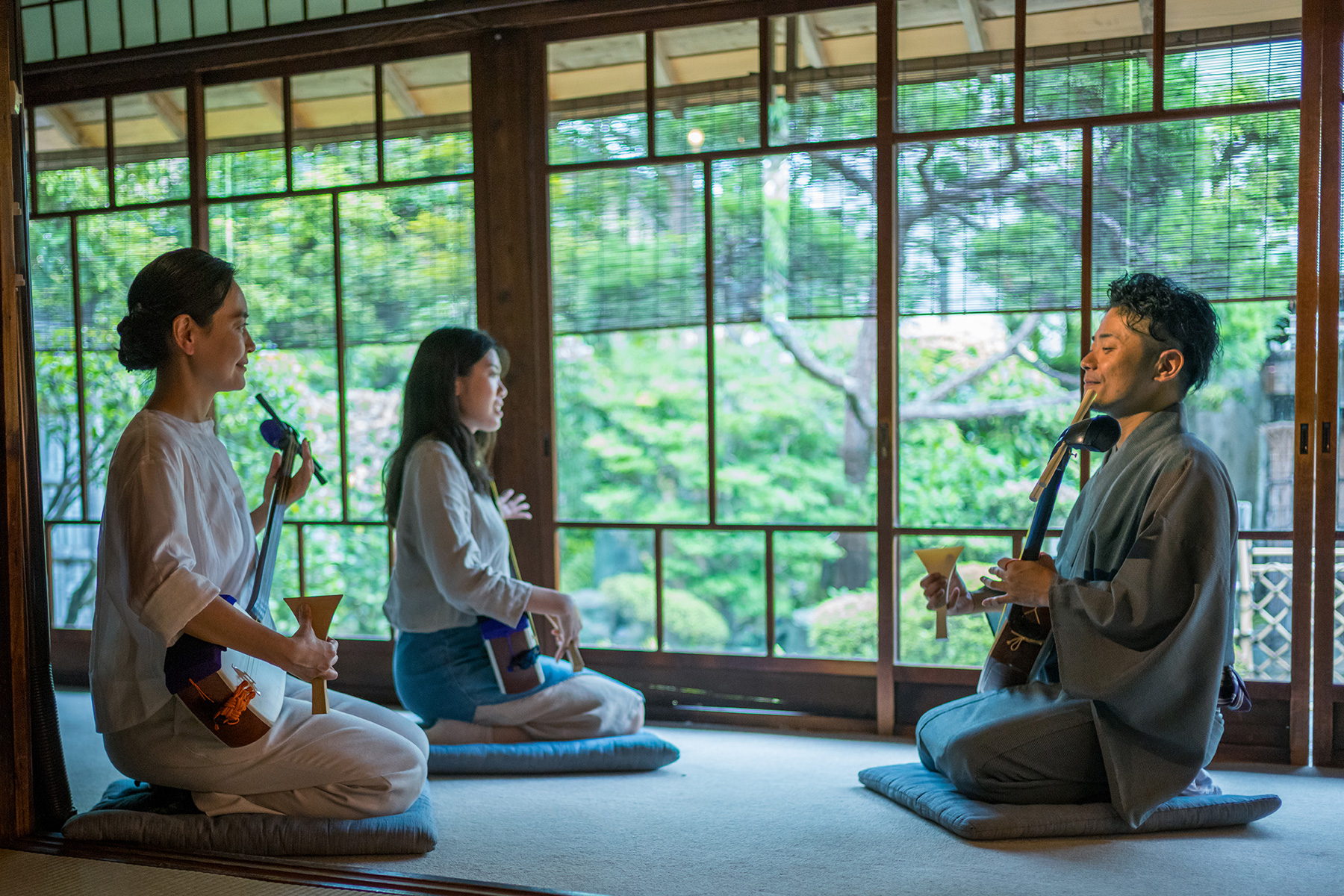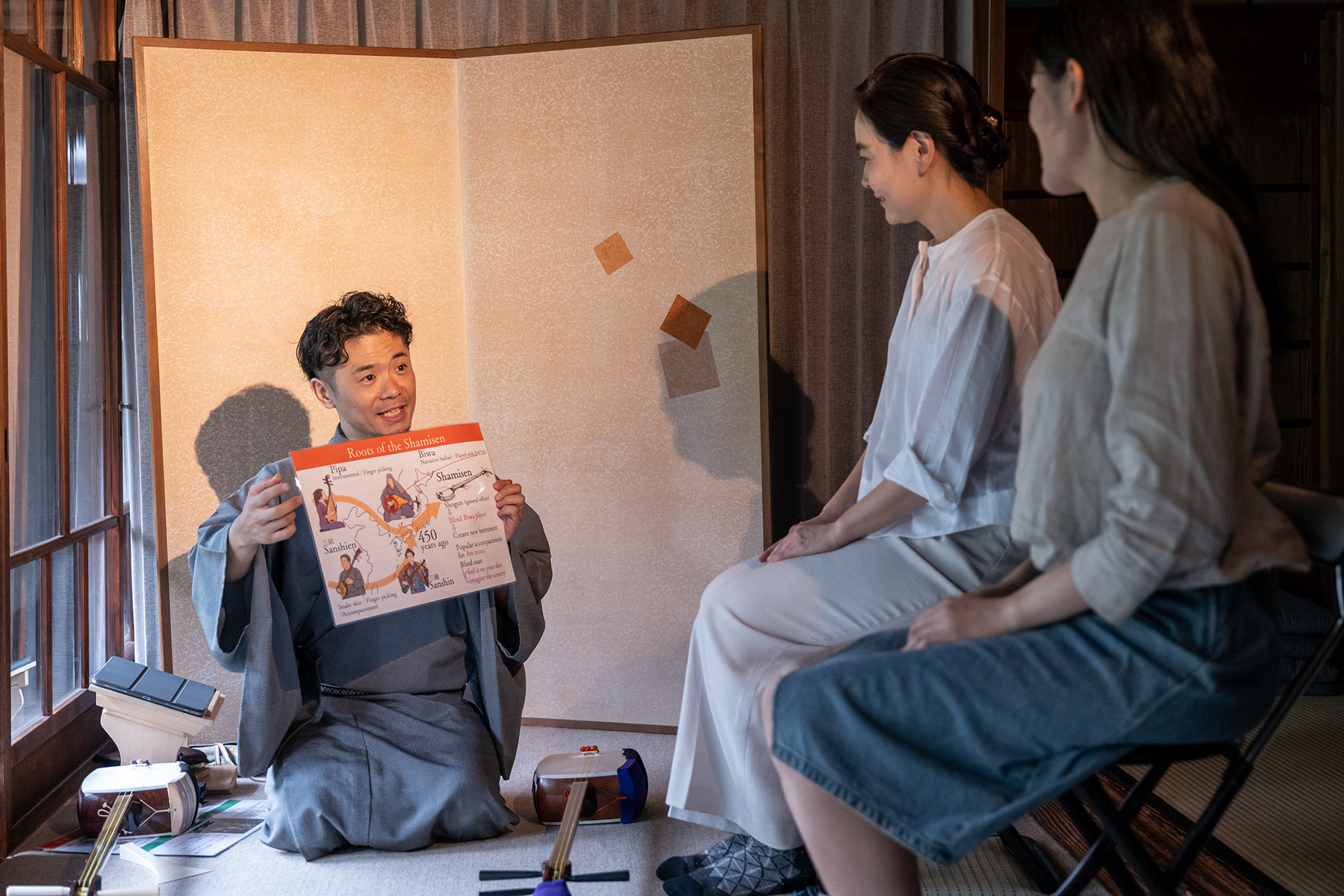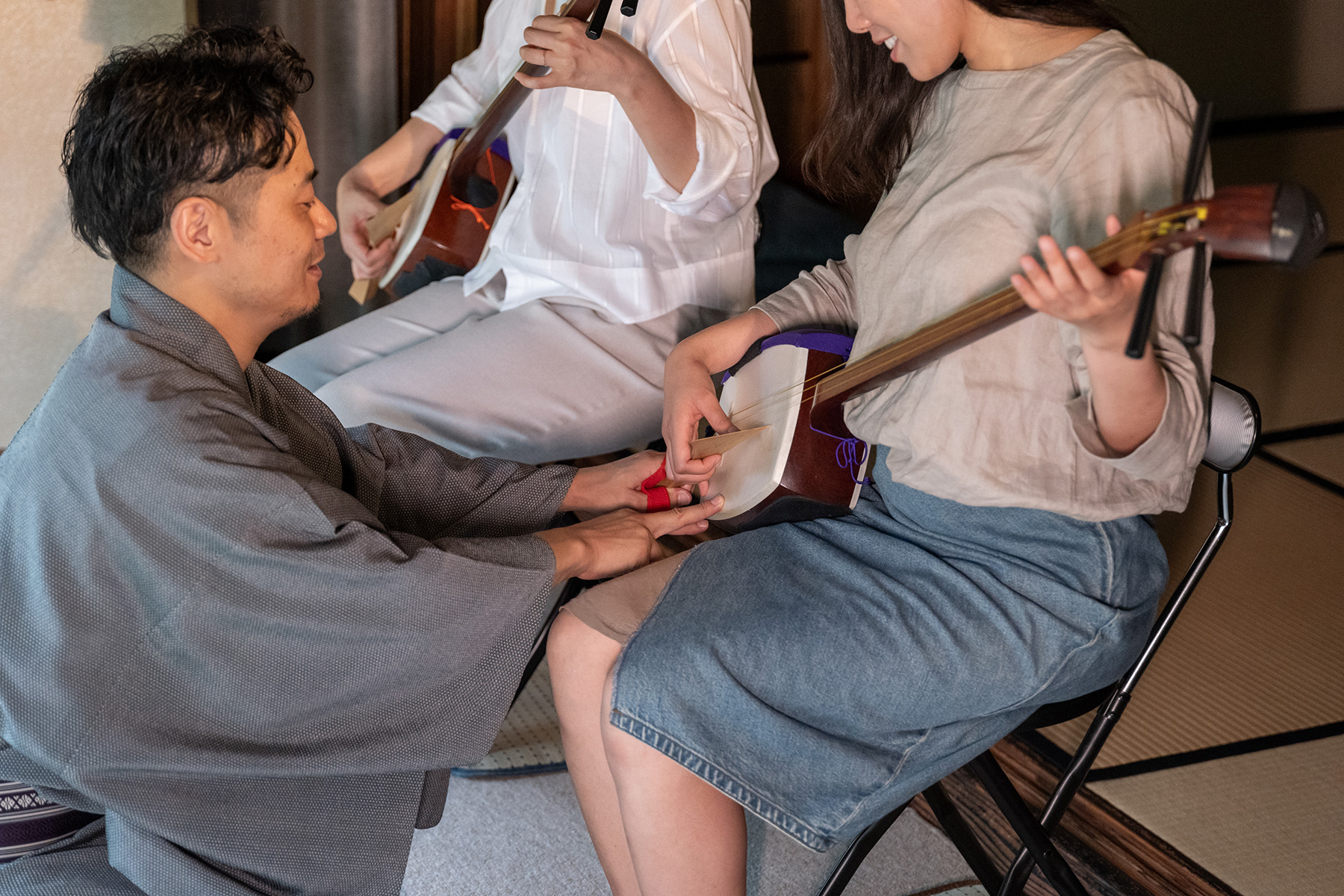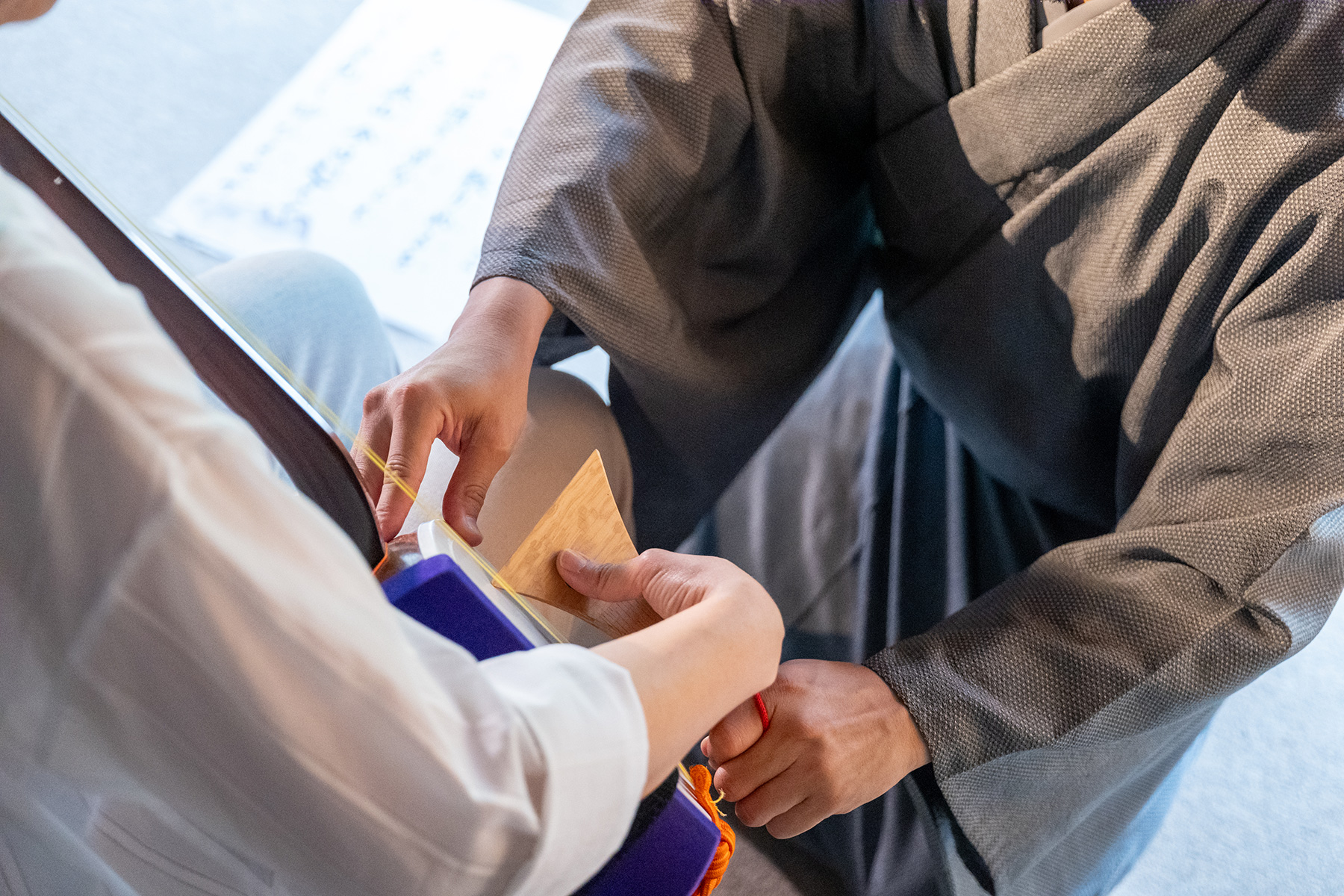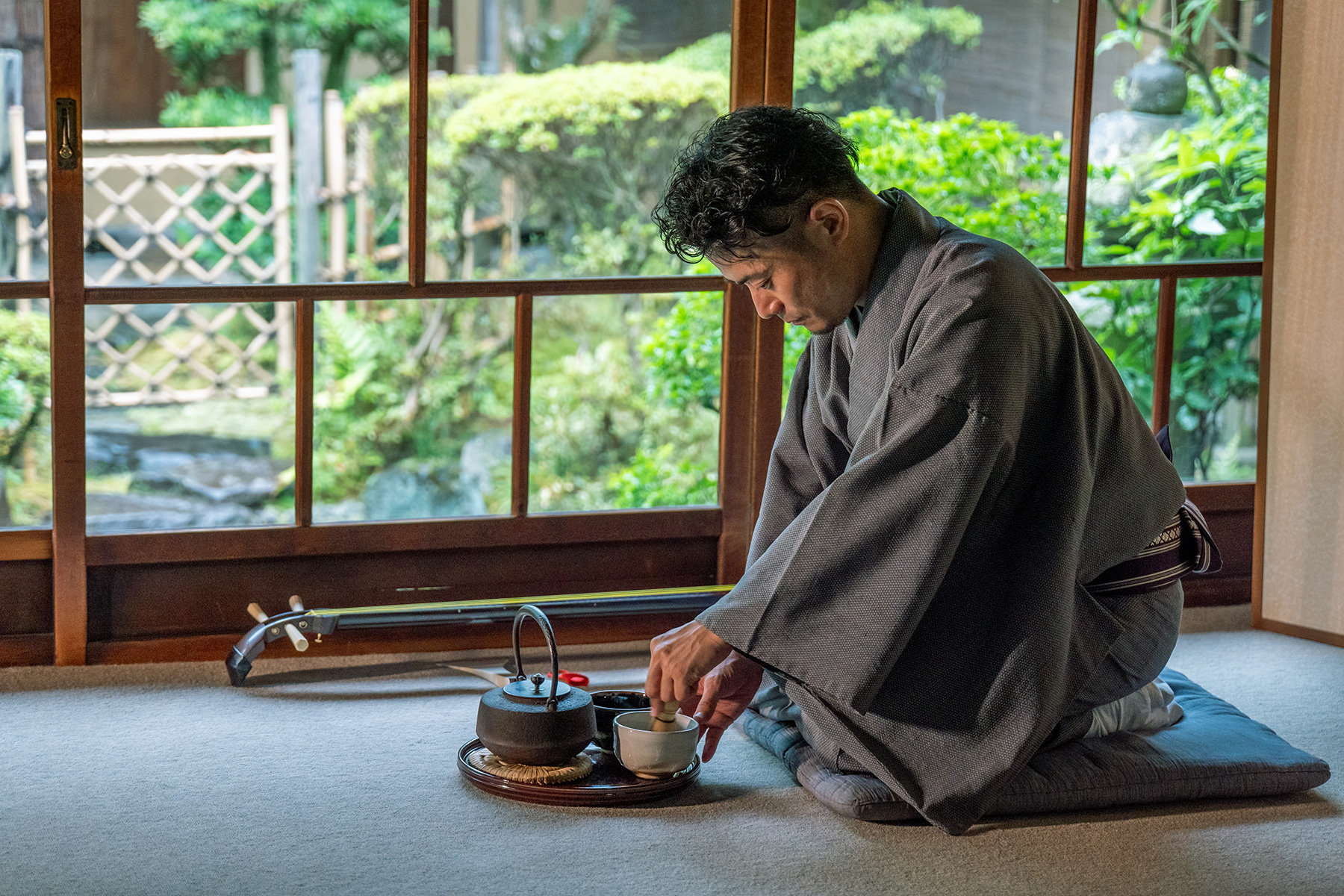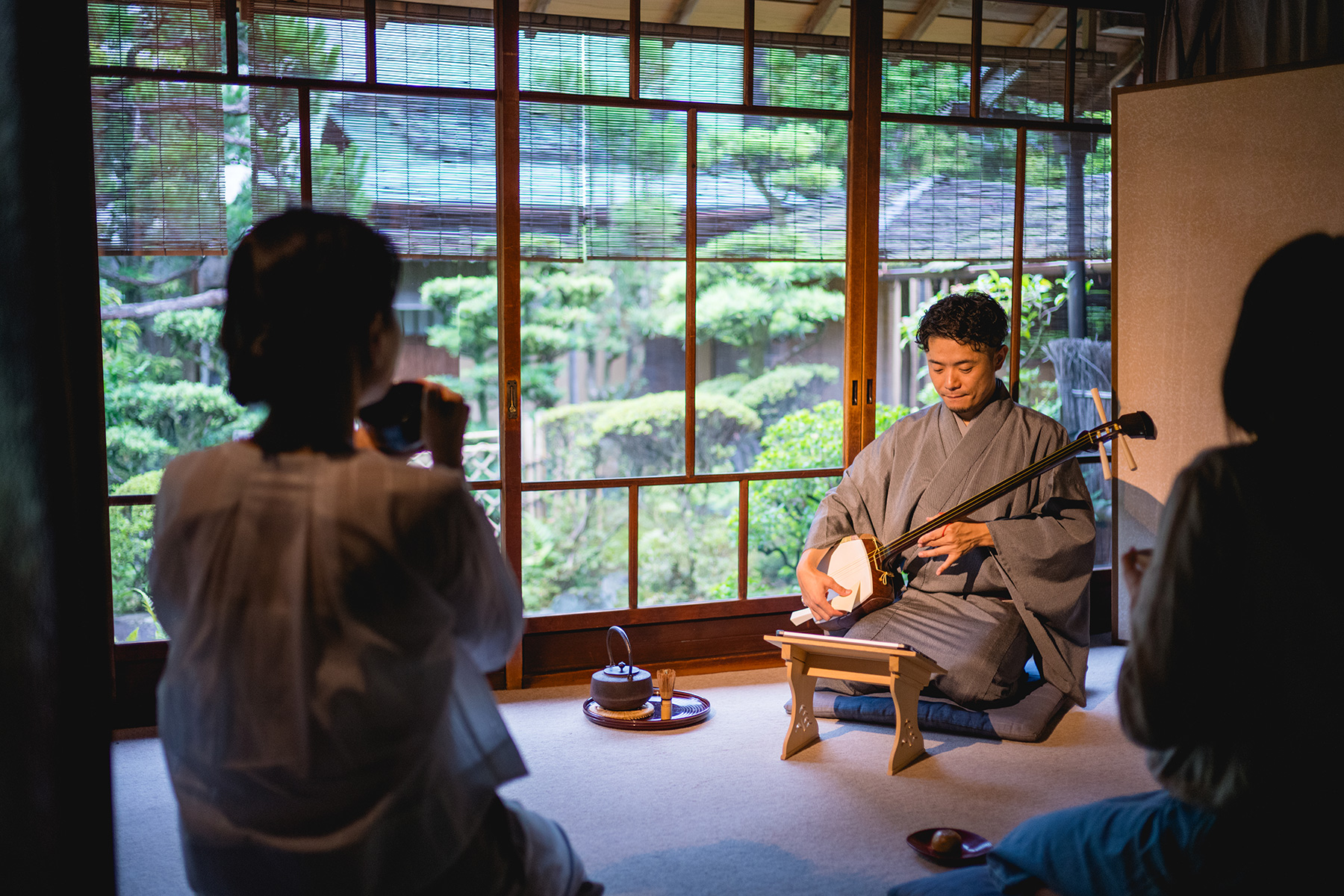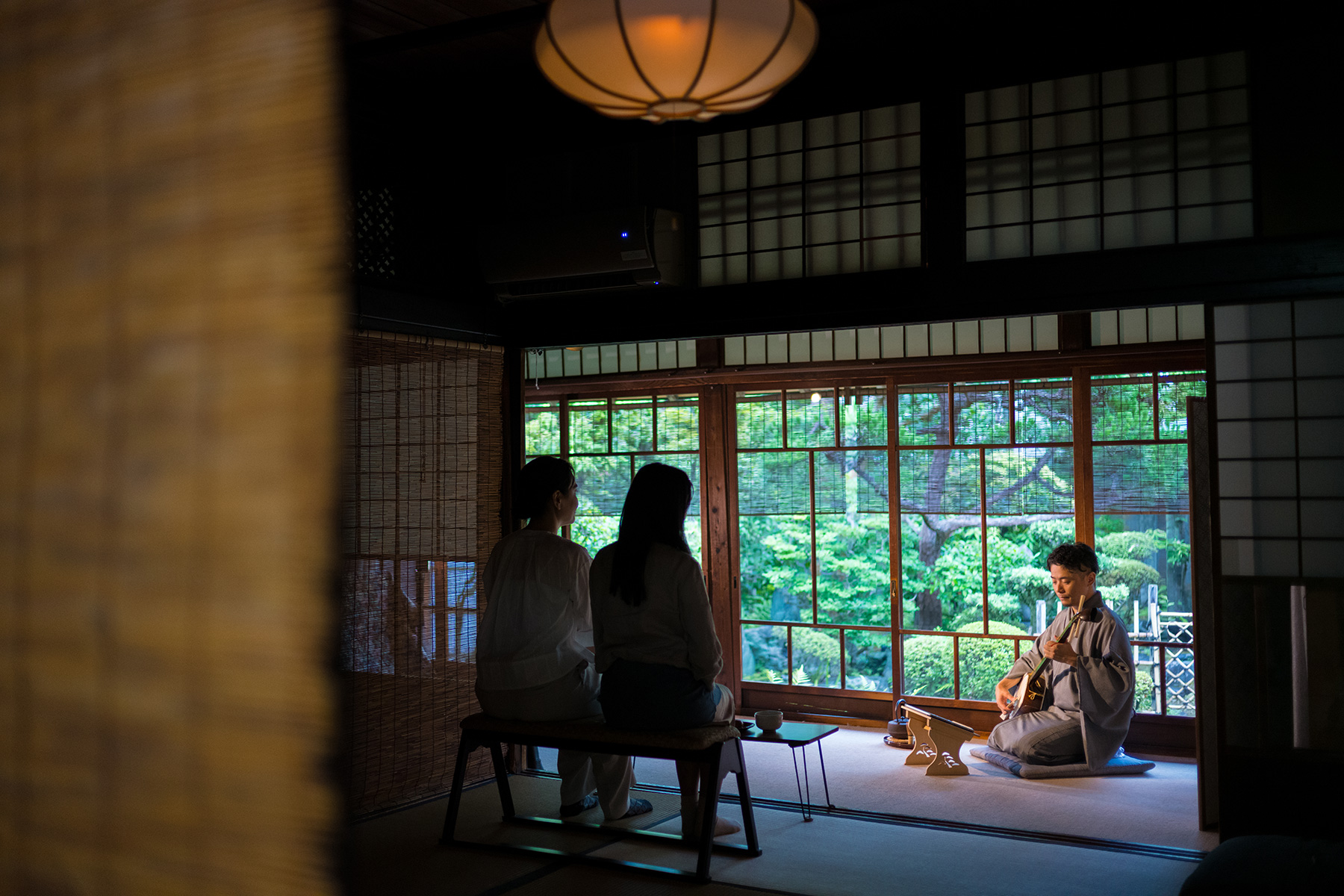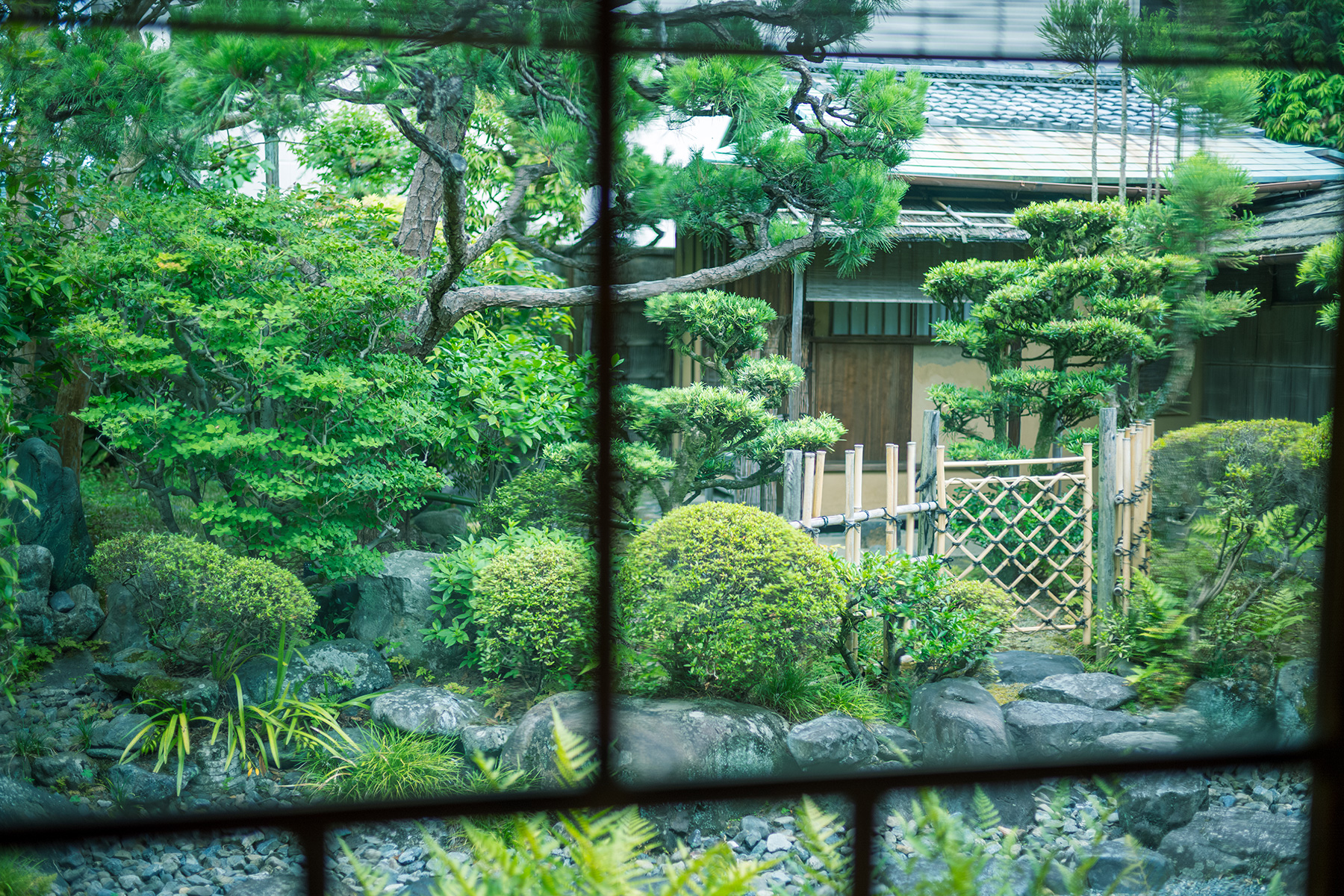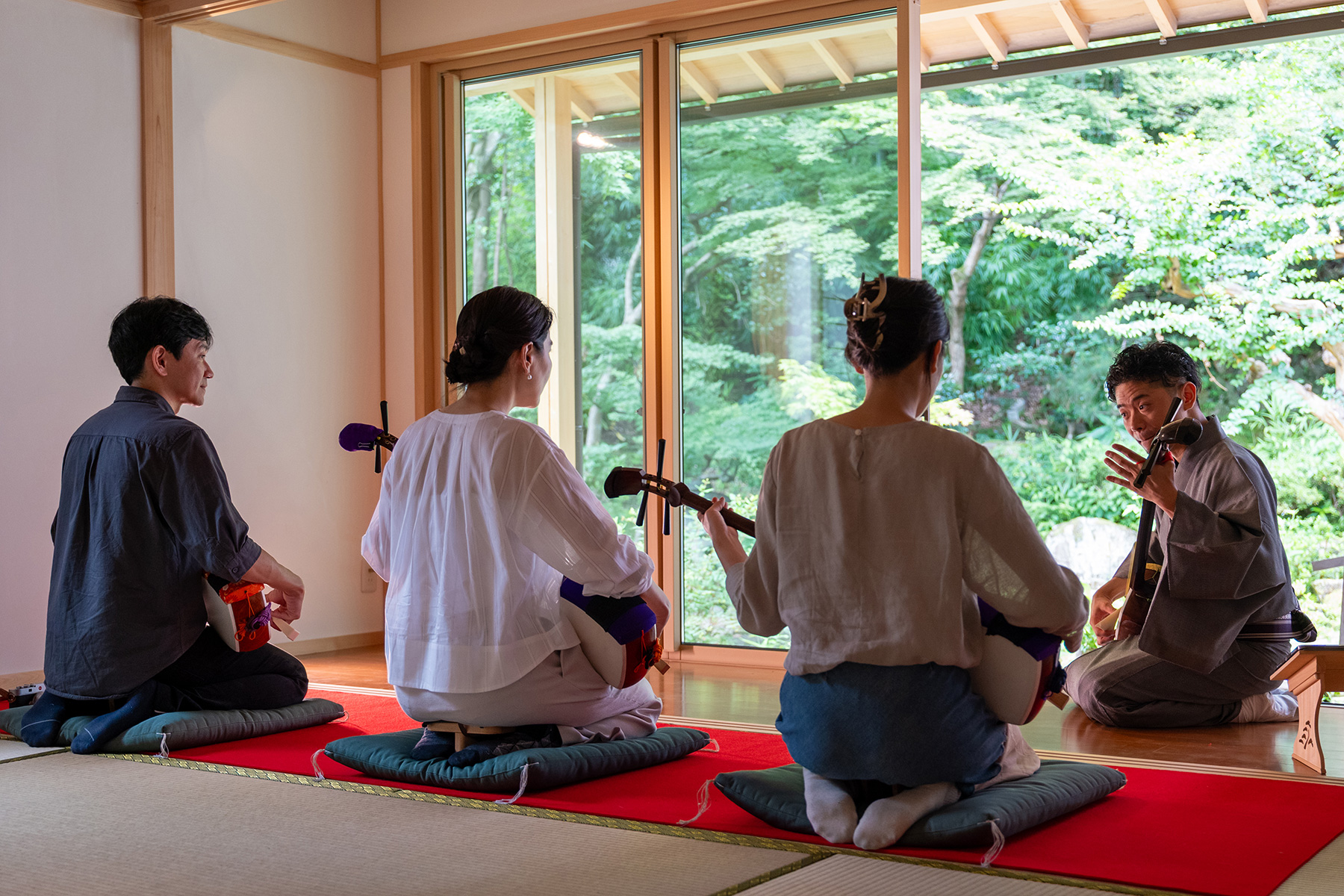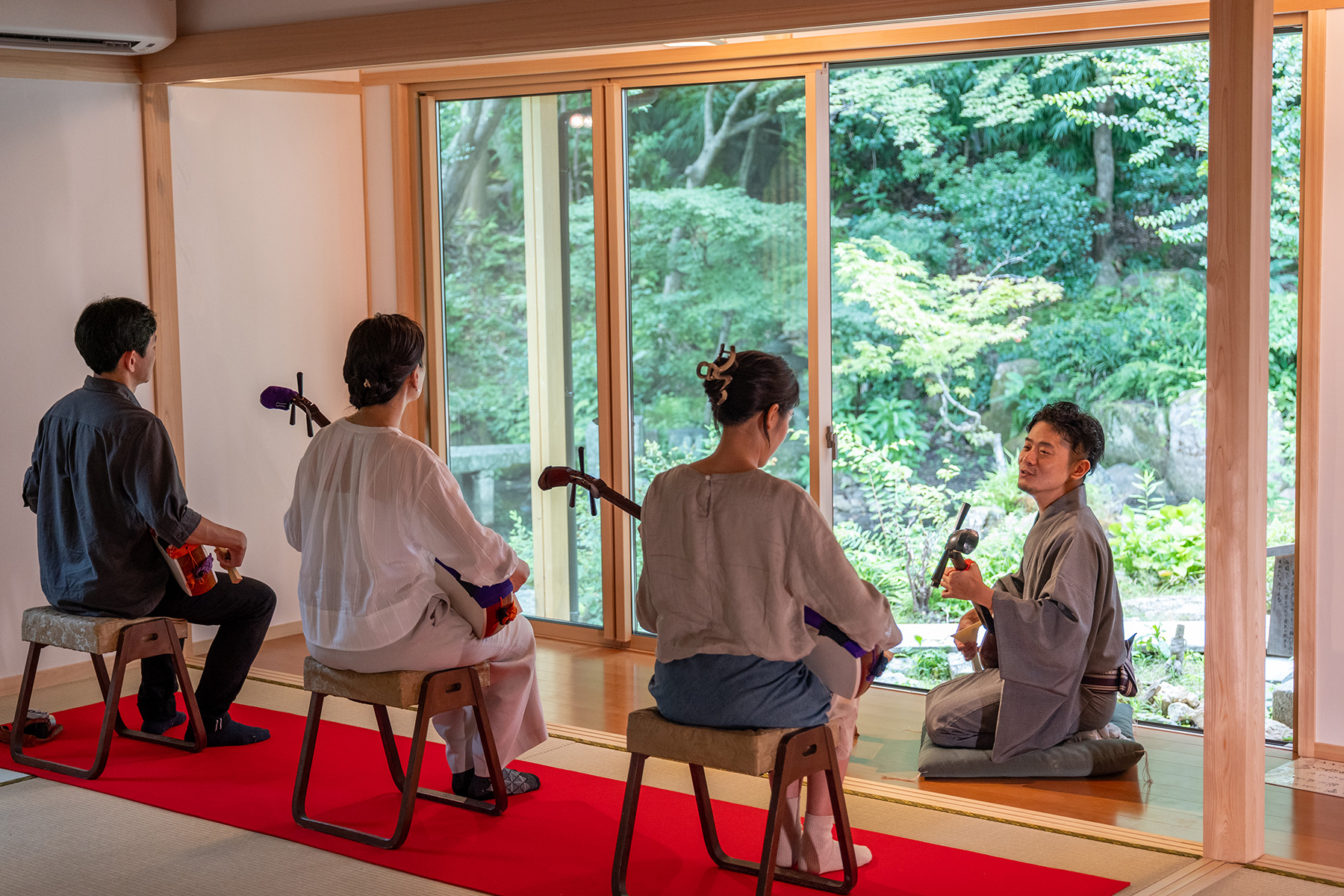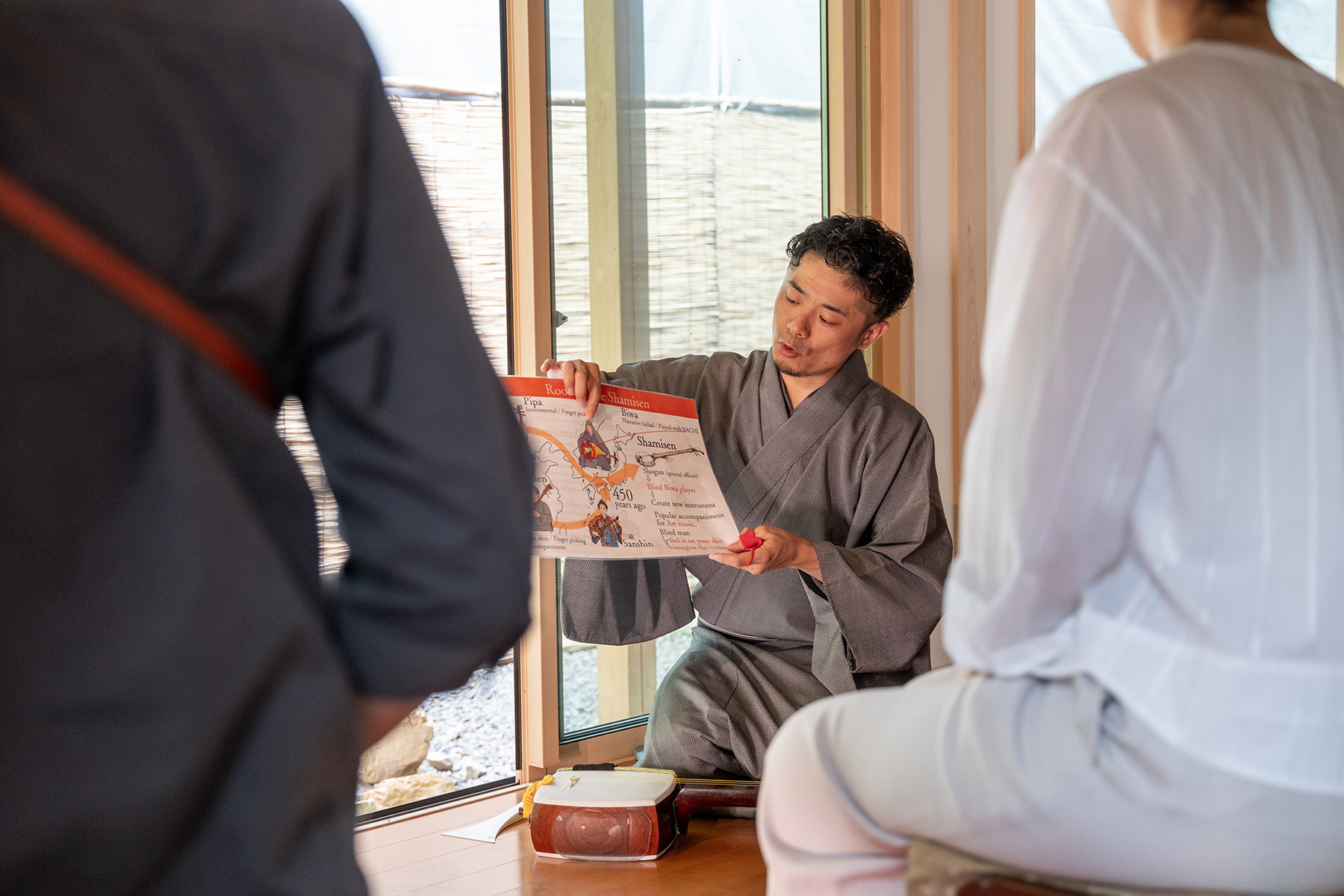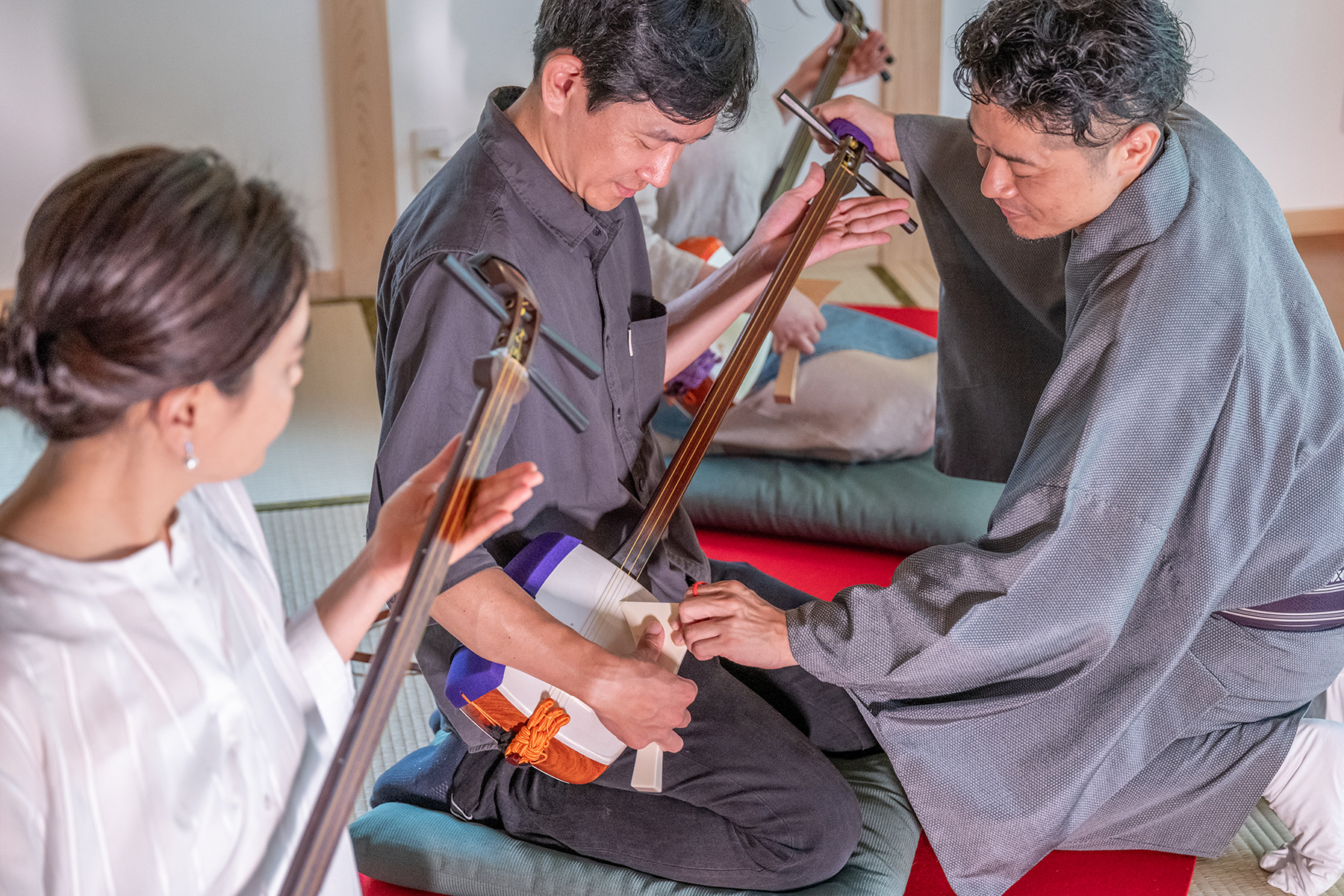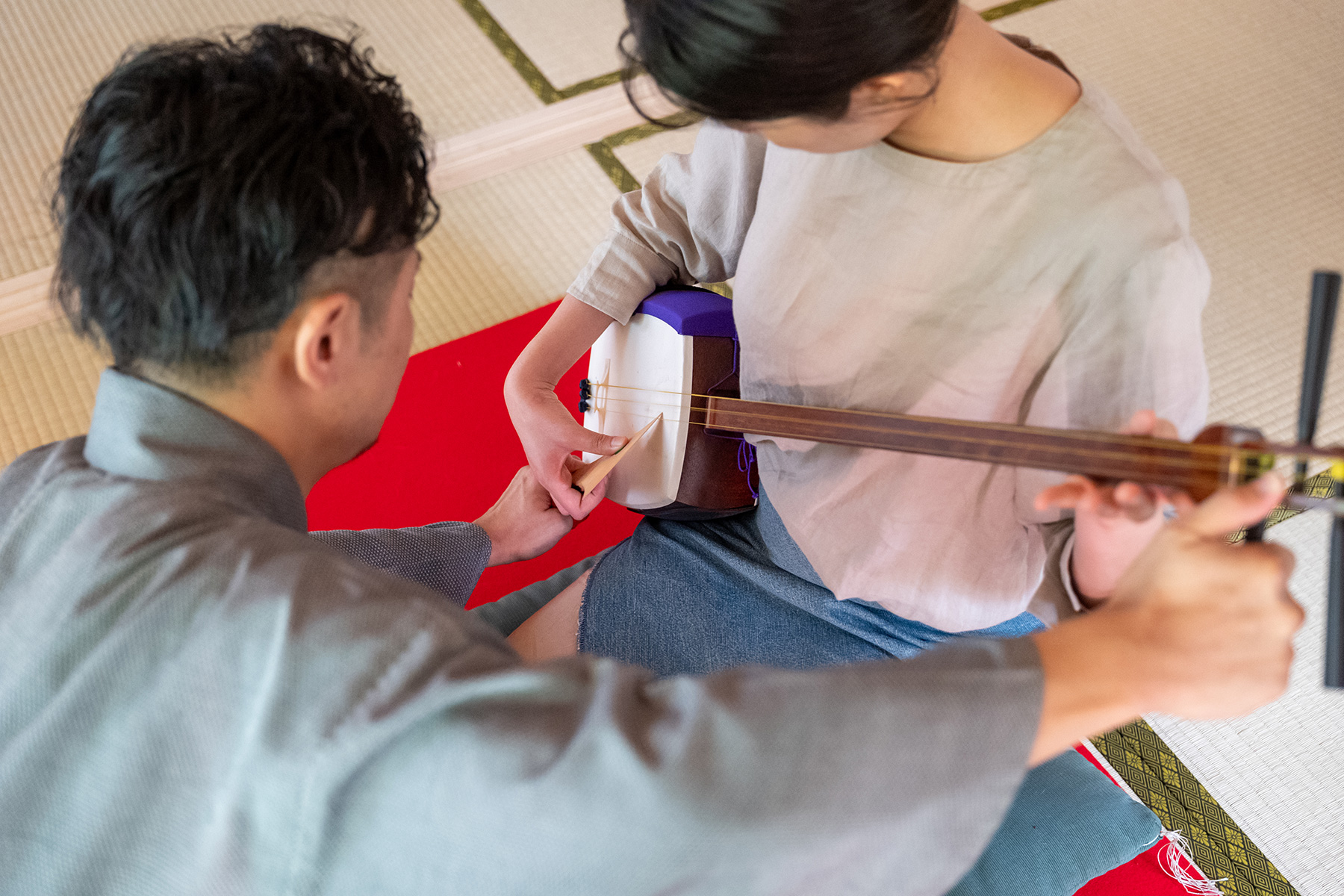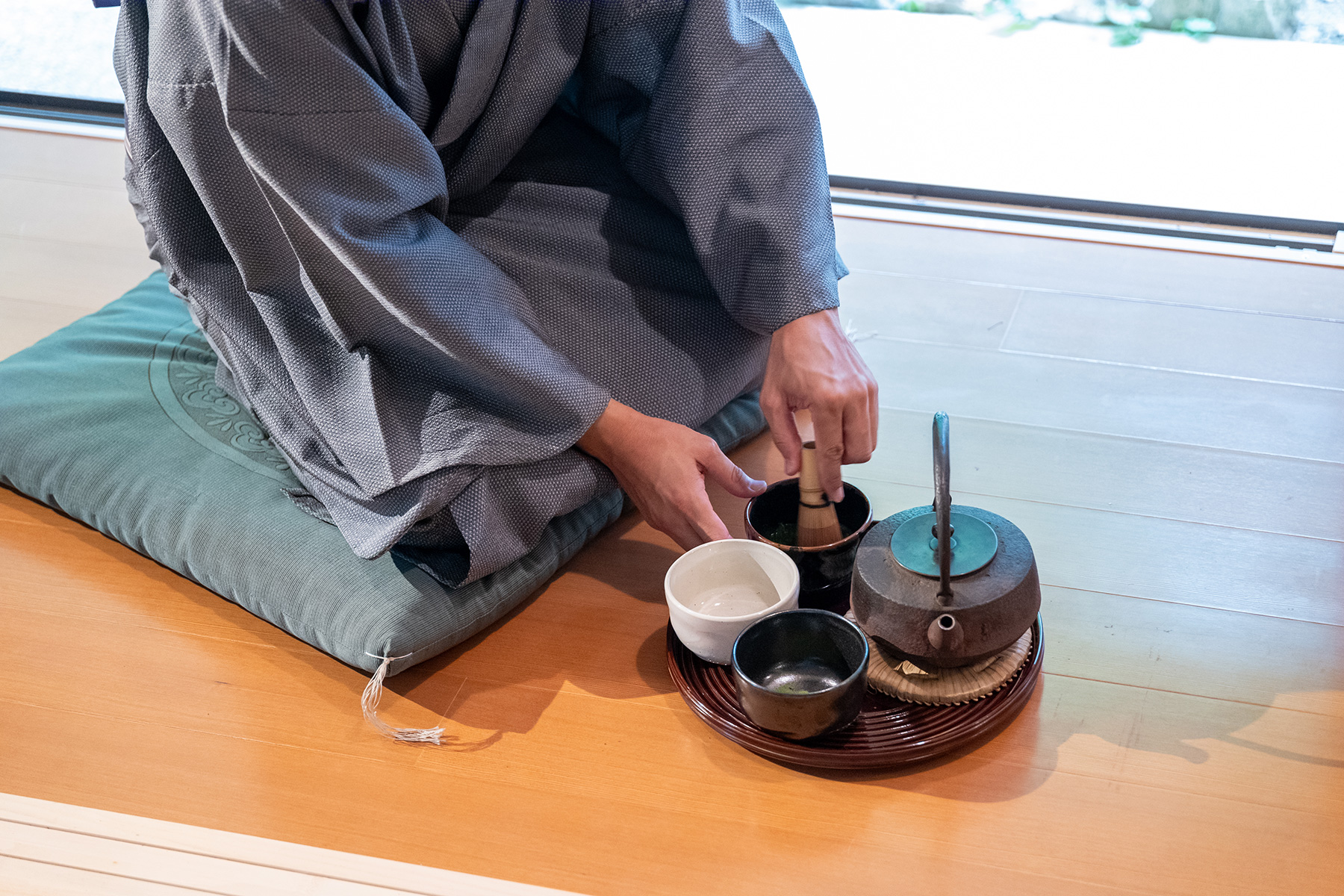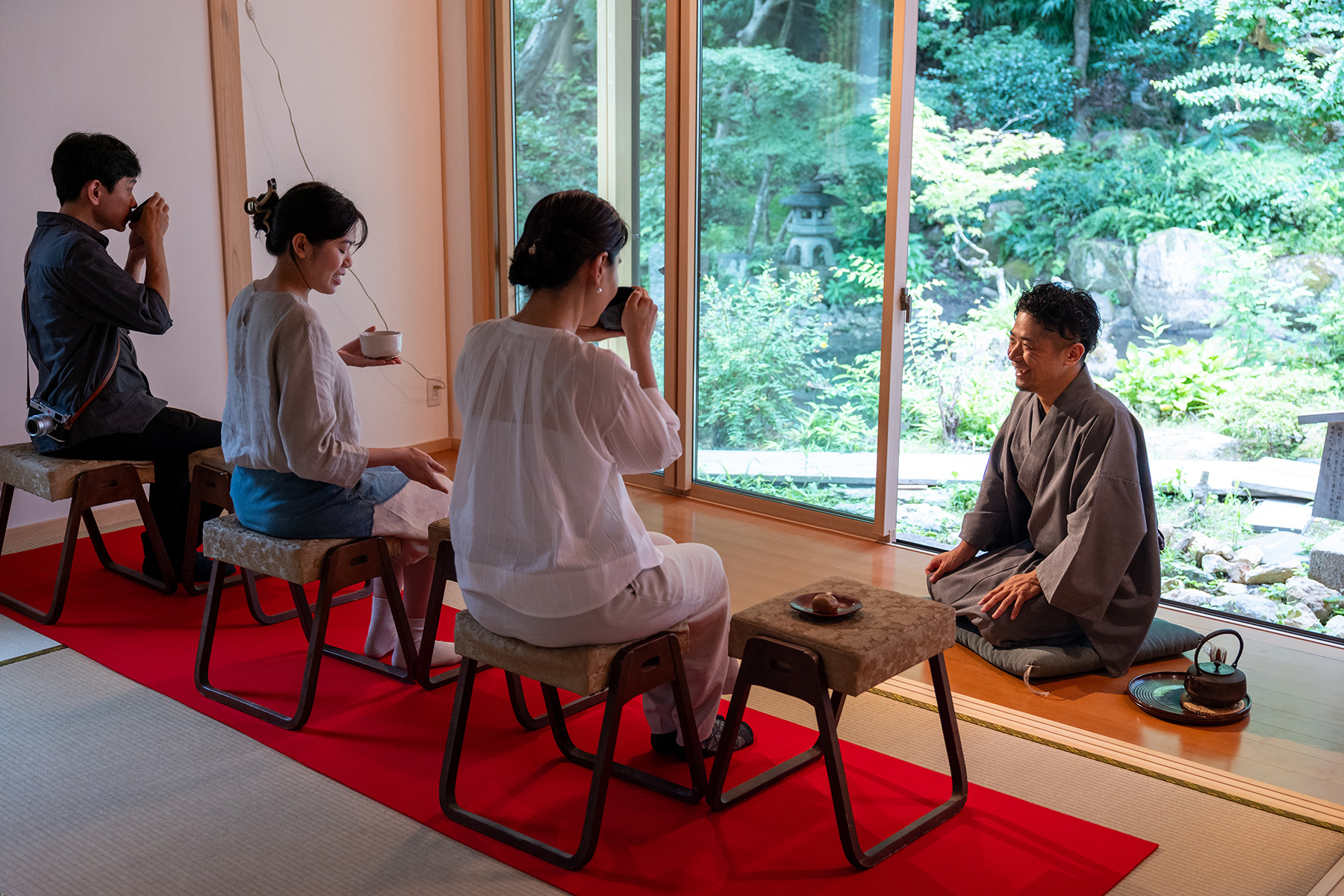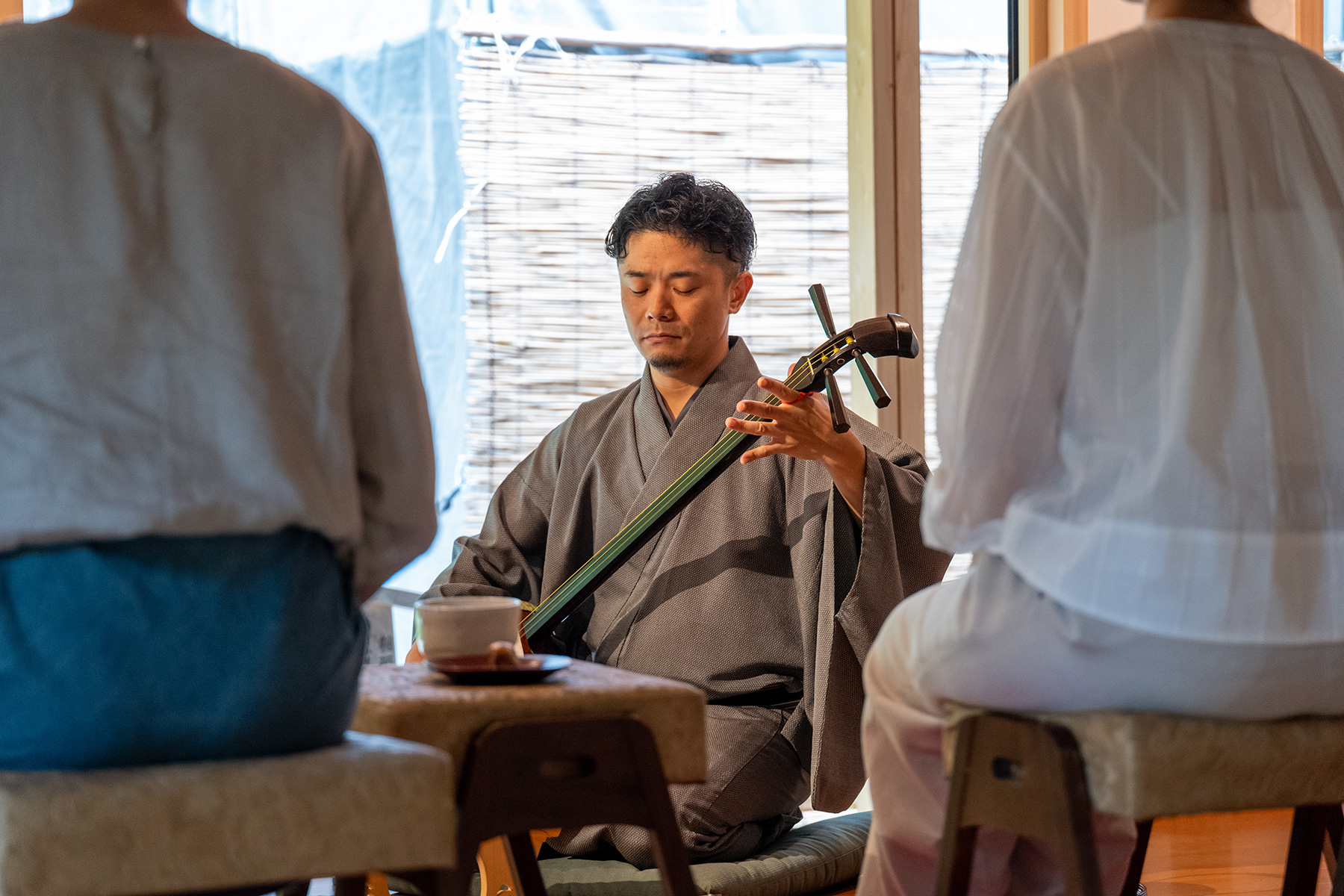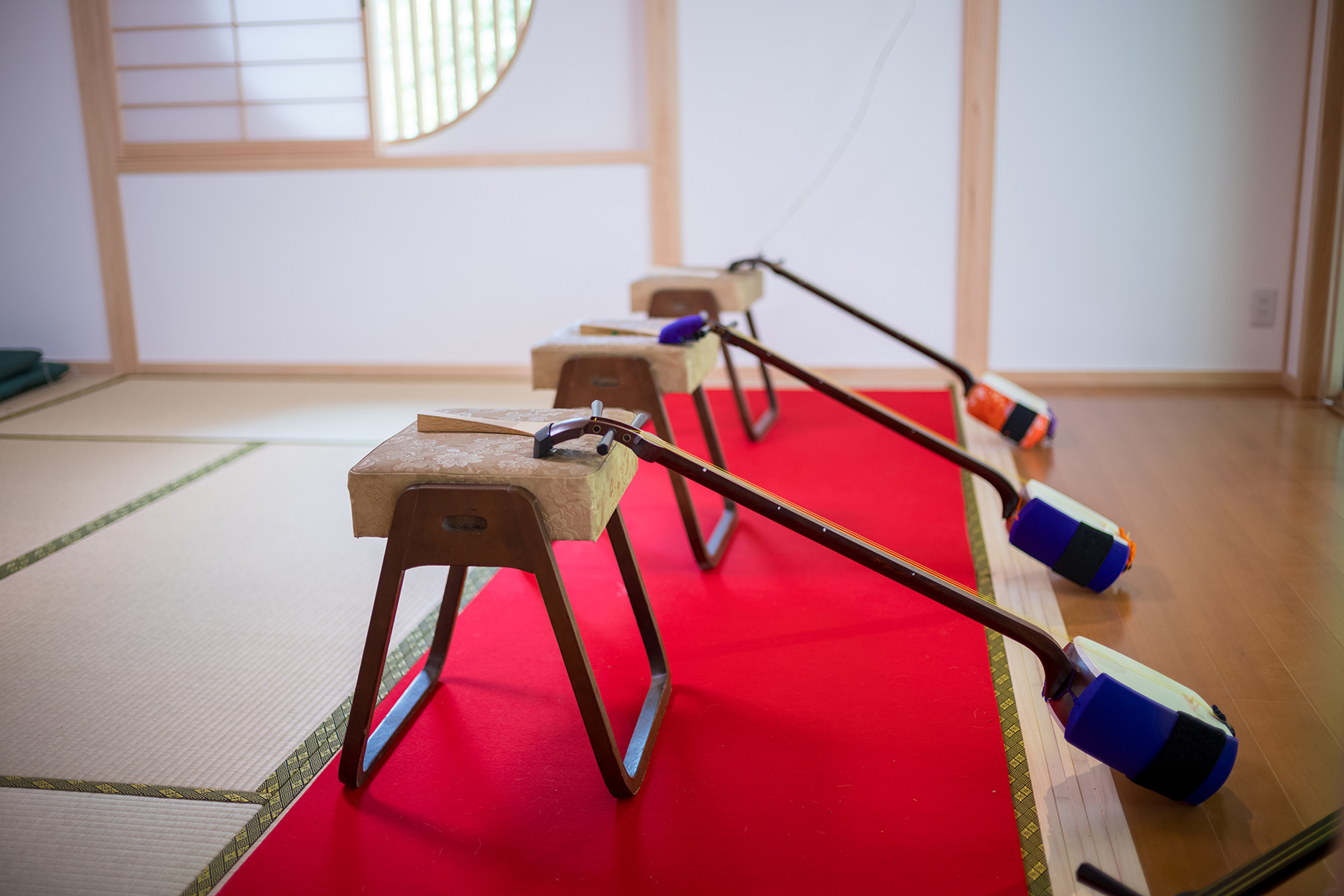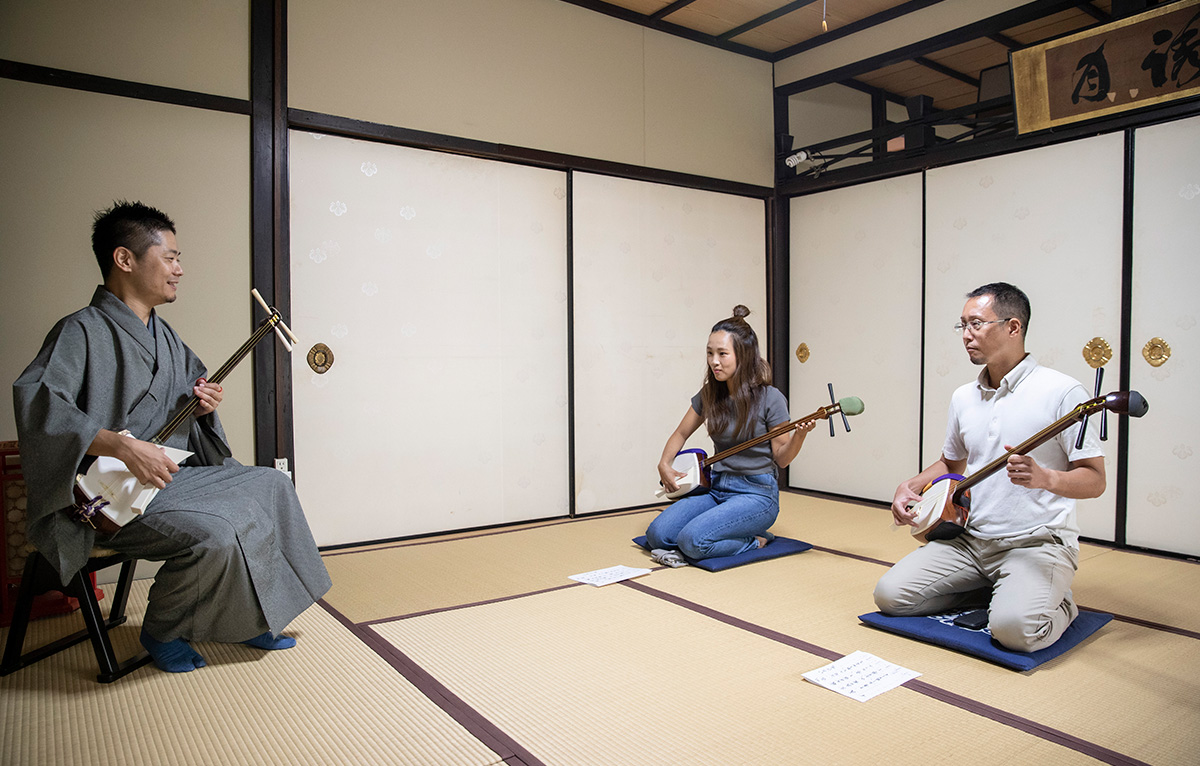Find pleasure in Japanese sounds
The shamisen’s sound expresses the beauty of Japanese landscapes, and the tones of ancient Japanese convey elegant emotions. Let’s savor the spirit of Japanese music together. Even if you have no musical experience, you can quickly learn to play and have fun.
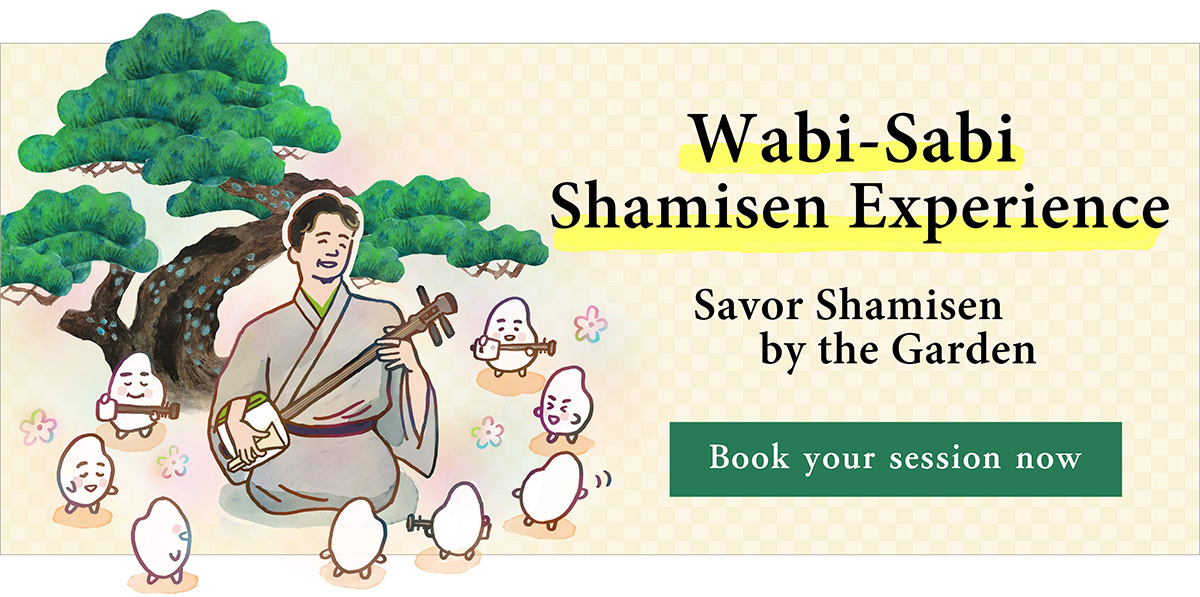

Experience Menu
Date & Time
- Reservation required, 1pm – 4pm (except Sundays)
Location : Buddhist temple
Private temple in Kyoto Downtown
(5-min walk from Sanjo Keihan Sta.)
Detailed location will be provided after booking.-
2. Kyoto Gion : Chourakuji Temple
(10-min. walk from the city bus Gion Sta.)
Google Maps
Duration
- Approx. 70 minutes
Number of people
- 1–4 people
Price
- 16,000 yen per person (advance payment by credit card required)
Includes facility use, lesson, matcha, sweets, and performance - Additional fees for Chourakuji:
+ ¥7,500 for 1 person
+ ¥5,000 for 2 people
+¥2,500 for 3 people
Options
- Kimono rental available only at Chourakuji Temple, ¥6,000 per person (max 3 people)
Booking
- At least 14 days in advance
Cancellation Policy
- 50% charge: 7–5 days before
- 100% charge: 4 days or less before
Date & Time
- Reservation required, 1pm – 7pm (except Sundays)
Location
- Buddhist temple in downtown Kyoto city (5-minute walk from Sanjo Keihan Station) Detailed location will be provided after booking.
Duration
- Approx. 50 minutes
Number of people
- 1 ~ 4 people
Price
- 8,000 yen / per person
We accept advance or same-day payment, in cash or by credit card.
Booking
- At least 7 days in advance
Cancellation Policy
- 100% charge: 4 days or less before
Experience concept Video
Experience Highlights
- Beginner-friendly and easy to enjoy
Play specially arranged songs with the teacher—no experience needed to feel the joy of “I did it!” - Feel the beauty of Japan through sound
Experience the subtle elegance of Japanese aesthetics with your senses. - Tuned to soothe your mind
The shamisen is tuned to 528Hz, known for its calming effects—relax as you play and listen.
Before taking lessons
- The teacher will respond in simple English. If the explanation is difficult, the teacher will use a translation app.
- Foreign languages are supported. Learners can support you in English, Spanish and Chinese. 5000 yen additional cost per time.
- No need to bring anything.
- You can experience it by sitting on a chair.
- Since you have to press the strings with your fingernails, it may be a little difficult for those with long nails. Please apply a nail-strengthening treatment before the class. If you don’t want your nails to be damaged, please let me know in advance.
- We kindly ask participants to dress in comfortable and modest clothing.
- Minimum age to attend is around 6 years old.
- We also have shamisen for children (please let us know in advance).
- Children in the lower grades of elementary school must be accompanied by the parent or guardian.
- Our lesson is not the lesson of Tsugaru shamisen or Jiuta shamisen.

- “I didn’t expect to be able to play shamisen right away!”
- “I’ve never touched shamisen so I was glad to play it.”
- “It was really fun! I enjoyed the lesson and got a sense of accomplishment. You can enjoy shamisen without any pressure.”
-
A.
No problem! Everyone starts from the beginning. -
A.
Hakumai was a tone-deaf before. -
A.
No. And even it’s OK to take only singing lessons.
Application Flow
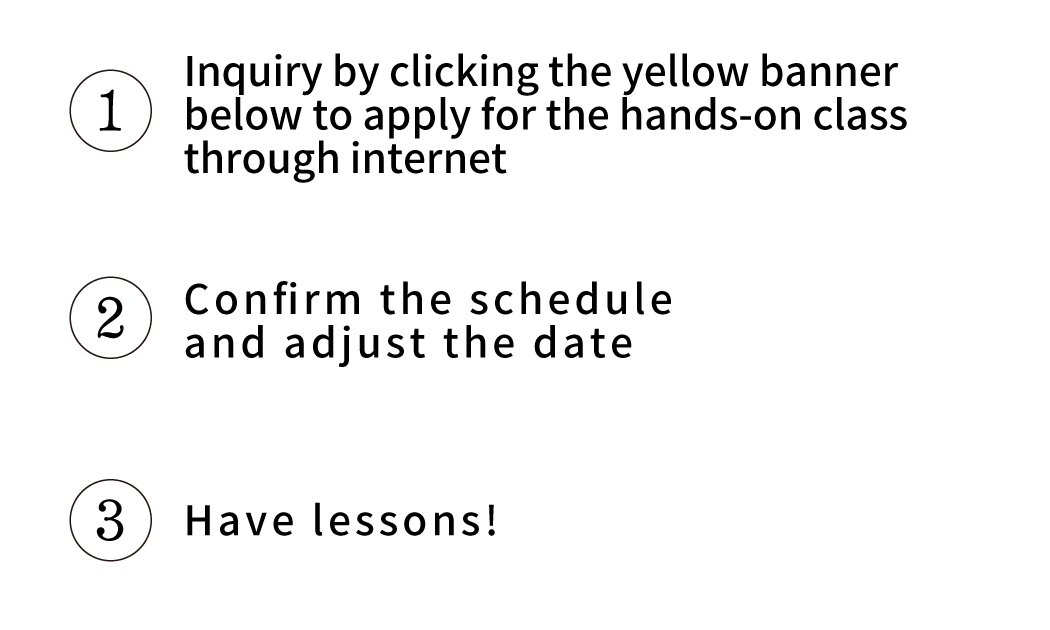
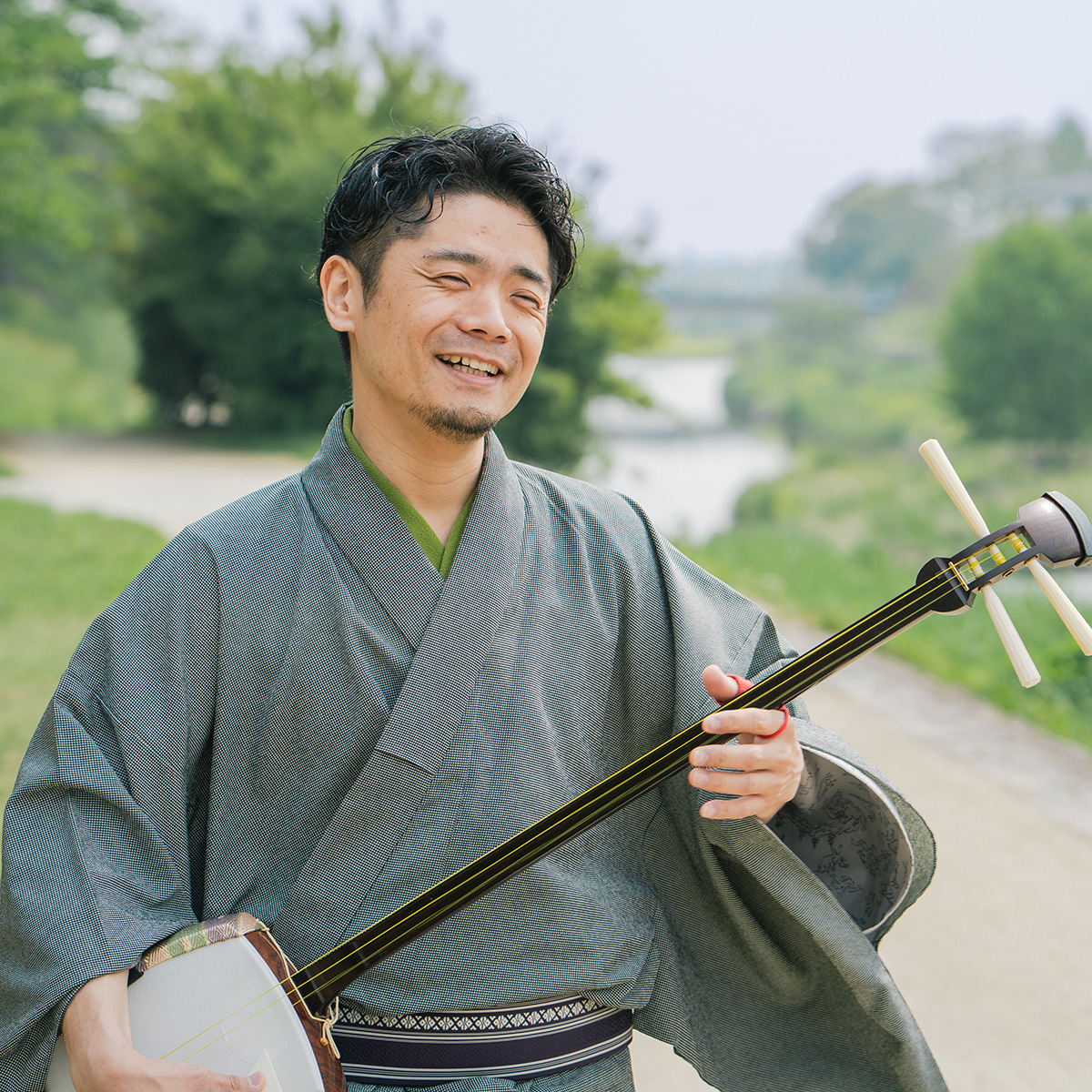
Shamisen song musician
Yamada Hakumai
Born in 1982 and based in Kyoto, delivering Wabi-Sabi sound experiences through singing and shamisen. (Wabi-Sabi refers to the Japanese aesthetic of imperfection and aging.)
Started playing Nagauta (Kabuki and Samurai music) in a university club in 2002. After graduating, became a professional Nagauta performer, appearing at major venues including Kabuki-za and the National Theatre.
Became independent in 2014. Released the original album Konjaku Oto Fukei (“Sound of Landscapes: Now and Then”) in 2019 (available online).
Performs Nagauta, Japanese folk songs, contemporary pieces, Western music, ambient music, and more in theaters, temples, bars, hotels, and other venues, earning praise from audiences across generations.


